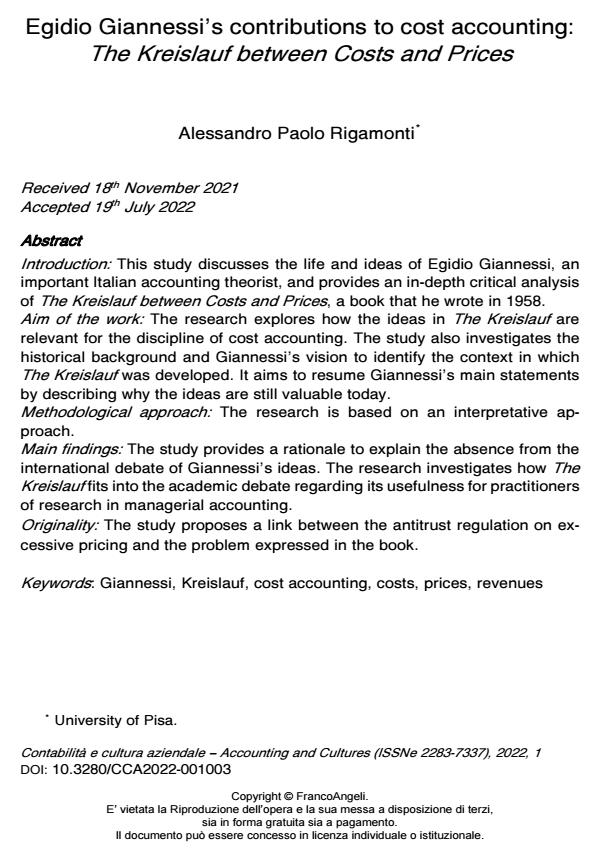Egidio Giannessi’s contributions to cost accounting: The Kreislauf between Costs and Prices
Titolo Rivista CONTABILITÀ E CULTURA AZIENDALE
Autori/Curatori Alessandro Paolo Rigamonti
Anno di pubblicazione 2023 Fascicolo 2022/1
Lingua Inglese Numero pagine 25 P. 29-53 Dimensione file 128 KB
DOI 10.3280/CCA2022-001003
Il DOI è il codice a barre della proprietà intellettuale: per saperne di più
clicca qui
Qui sotto puoi vedere in anteprima la prima pagina di questo articolo.
Se questo articolo ti interessa, lo puoi acquistare (e scaricare in formato pdf) seguendo le facili indicazioni per acquistare il download credit. Acquista Download Credits per scaricare questo Articolo in formato PDF

FrancoAngeli è membro della Publishers International Linking Association, Inc (PILA)associazione indipendente e non profit per facilitare (attraverso i servizi tecnologici implementati da CrossRef.org) l’accesso degli studiosi ai contenuti digitali nelle pubblicazioni professionali e scientifiche
Introduction: This study discusses the life and ideas of Egidio Giannessi, an im-portant Italian accounting theorist, and provides an in-depth critical analysis of The Kreislauf between Costs and Prices, a book that he wrote in 1958. Aim of the work: The research explores how the ideas in The Kreislauf are relevant for the discipline of cost accounting. The study also investigates the historical background and Giannessi’s vision to identify the context in which The Kreislauf was developed. It aims to resume Giannessi’s main statements by describing why the ideas are still valuable today. Methodological approach: The research is based on an interpretative approach. Main findings: The study provides a rationale to explain the absence from the in-ternational debate of Giannessi’s ideas. The research investigates how The Kreis-lauf fits into the academic debate regarding its usefulness for practitioners of re-search in managerial accounting. Originality: The study proposes a link between the antitrust regulation on exces-sive pricing and the problem expressed in the book.
Parole chiave:Giannessi, Kreislauf, cost accounting, costs, prices, revenues
Alessandro Paolo Rigamonti, Egidio Giannessi’s contributions to cost accounting: The Kreislauf between Costs and Prices in "CONTABILITÀ E CULTURA AZIENDALE" 1/2022, pp 29-53, DOI: 10.3280/CCA2022-001003